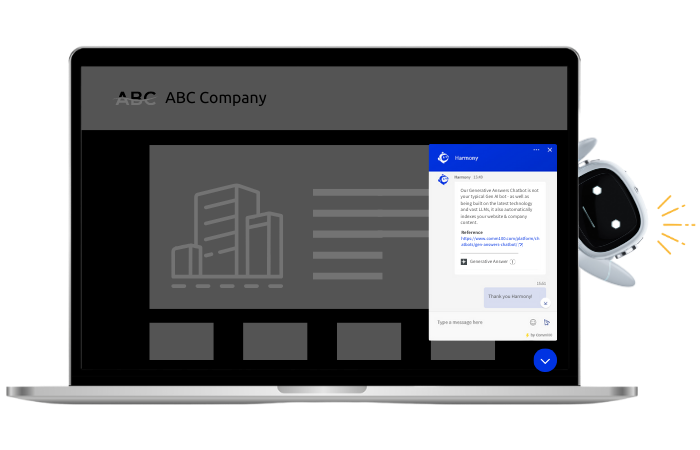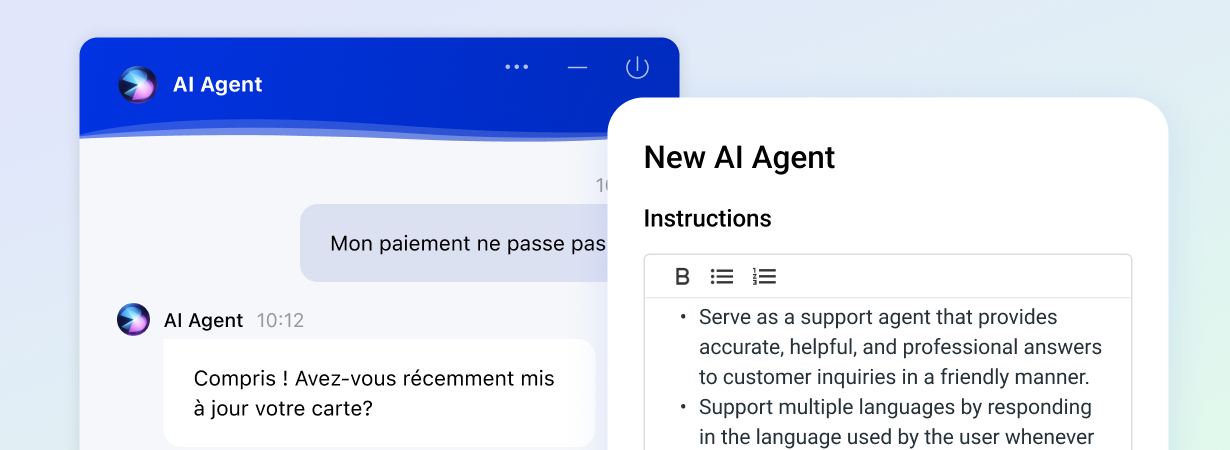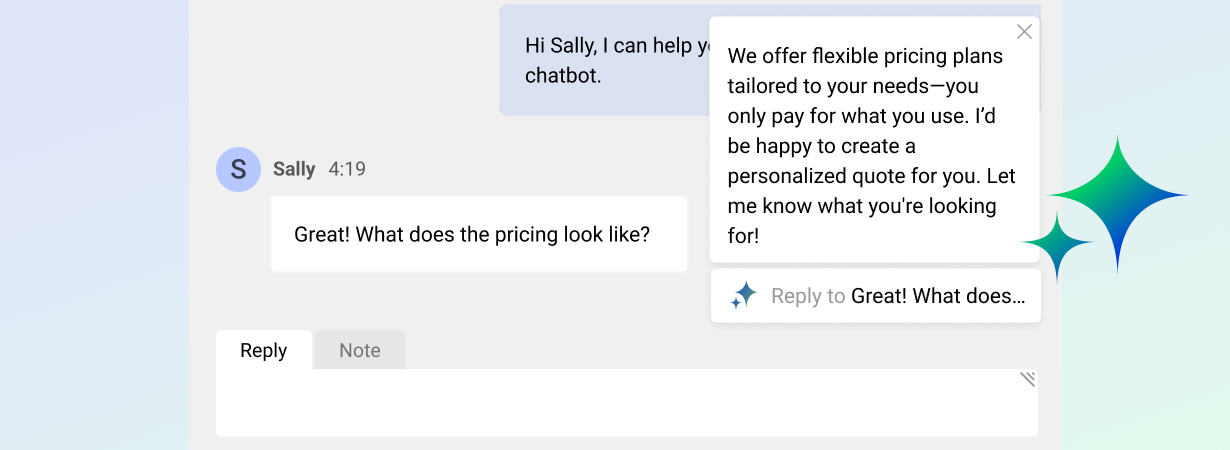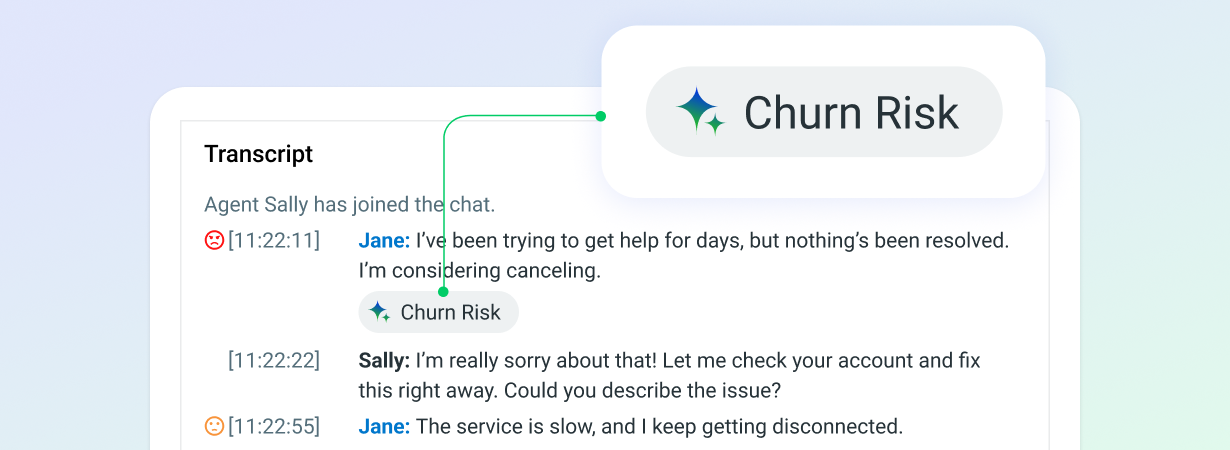Nearly one half of US respondents disagree that in-person higher education is worth the cost. Combine this opinion with increasing competition from home and abroad, and you don’t paint the most positive picture for higher education.
However, it’s certainly not all doom and gloom for universities and colleges. Advancements in technology are providing higher education with effective ways to improve student support across every stage of the student lifecycle, and chatbots are becoming key to this.
This article will showcase how universities and colleges are using higher education chatbots today, highlighting a higher ed chatbot use case for three key departments. Read on for higher ed chatbot examples that will inspire you in 2022.
1. Increasing enrolment in Recruitment
Let’s begin with one of the most common and effective higher ed chatbot use cases – boosting enrolment by offering 24/7 support. Today’s students expect to receive support when it suits them, not when it suits the school’s working hours. 72% of Gen Z, the demographic that makes up the majority of today’s students, say they “expect to interact with someone immediately” when they reach out for support. However, hiring agents to work outside of normal hours simply isn’t feasible for most schools.
This is where a chatbot comes into its own. With a bot in place, universities and colleges can immediately offer around-the-clock support, providing real-time answers to common questions. This significantly increases opportunities to engage with prospective students at home, and also international students abroad who live in different time zones.
For prospective students exploring their options, common questions that a chatbot can handle include:
- “What is the average class size?”
- “What housing options are available on campus?”
- “How easy is it to switch majors?”
- “What kinds of athletic scholarships are available?”
- “Are co-op opportunities available through your college?”
Compared to offering traditional support and live agent support after hours, introducing a chatbot comes at a fraction of the cost of additional agents. This reduced cost and improved capacity means that more schools can afford to offer 24/7 support.
Cambrian College provides an excellent example of this recruitment strategy in action. After successfully using Comm100 Live Chat for a year and a half, Cambrian College added Comm100 Chatbot to their student support offering. The bot, affectionately named BurnieBot after the college’s mascot, was set up to enable 24/7 support. They recognized that many of their students wanted to connect during out of office hours, particularly students abroad in different time zones. With a chatbot in place, Cambrian can now deliver around-the-clock support to any student, creating far more opportunities to connect with prospective students and boost their recruitment efforts.
“BurnieBot was going to be active when live agents couldn’t be so we wanted to make sure that he could provide the level of customer service that we expected from everyone in our Recruitment department.” – Alison Caruso, Manager of Student Recruitment at Cambrian College
2. Automating repetitive support in Admissions
The unlimited capacity of chatbots makes them an excellent solution to spiking volumes during admissions season. When customer service and support queries are at an all-time high in the build up to a new academic year, chatbots can easily answer questions related to courses, accommodations, fees, and more. For these reasons, admission bots are another great higher ed chatbot use case.
As might be expected, many, if not most, admission questions are simple and repetitive. Despite the basic nature of these questions, they still have value to the student and the institution. A helpful and quick response could be the difference between a student applying to your school or another. However, even these simple questions require a lot of agent capacity in high volumes, which can lead to lengthy wait times.
An AI chatbot can resolve all of these common and time-consuming questions without any human involvement. As well as speeding up support, this also adds capacity to a team by freeing up agents to handle more complex and challenging issues. Common questions that a chatbot could easily handle include:
- “How do I begin the application process?”
- “What are the prerequisites for admission?”
- “What are acceptance rates?”
- “Are there waitlists for the program I’m interested in?”
Cambrian College’s introduction of Comm100 Chatbot provides another successful example in how chatbots can be used to grow capacity in a support team. BurnieBot now handles over 70% of chats – a figure that keeps increasing as the bot learns from conversations.
3. Improving student engagement & retention in Student Affairs
While attracting new students is essential, retaining current students is vital too. One study found that roughly 20% of spending in higher education is a direct result of student attrition. With that in mind, it’s no surprise that institutions are adopting chatbots to engage with current students and provide helpful support with their academic studies and general campus life.
When it comes to support expectations, students hold a high bar. Grown up surrounded by technology and seamless customer experience (CX), they are used to enjoying fast and convenient support. In fact, 71% believe that CX can be drastically improved by quick responses, and 74% of Gen Z say convenience is more important than brand.
Read more: How to Improve Student Support Services – Meeting Sky-high Student Expectations
Thankfully for higher education, AI chatbots can deliver on these sky-high support expectations and make sure that students feel engaged. Chatbots enable fast and accessible support for an unlimited number of questions. Student affairs questions that chatbots can easily handle include:
- “What tutoring options are available on campus?”
- “Where can I find a copy of my timetable?”
- “What time is the campus library open until?”
- “Where can I go for counselling services?”
Chatbots can be used to answer these questions directly, direct visitors to specific pages, or show them explainer videos. Intelligent routing is crucial to this – because a huge range of questions can be asked, you need to make sure that the right person or department receives the chat. Getting it right the first time is very important to Gen Z students, with 75% of Gen Z respondents surveyed saying that they “expect to solve complex problems by speaking to one person”. Chatbots can determine the best option and route it accordingly.
Despite the power and versatility of chatbots, they shouldn’t be used to answer every question. There will always be questions that need a human touch. If your bot is being used during office hours, you should ensure that students always have the option to speak to an agent. Outside of office hours, you can provide students with the option to fill out a form and let them know that an agent will respond when they are back online.
Cambrian College recognized that it was best practice to inform students when they were speaking to their AI chatbot to set clear expectations. If he didn’t have the answer to their question, he assured them that someone would get in touch when they were back online to resolve their question.
Wrap Up
We hope that these higher ed chatbot use cases have inspired you. If you’re ready to explore how a chatbot can benefit your school, book a demo to see Comm100 AI chatbot in action today.






